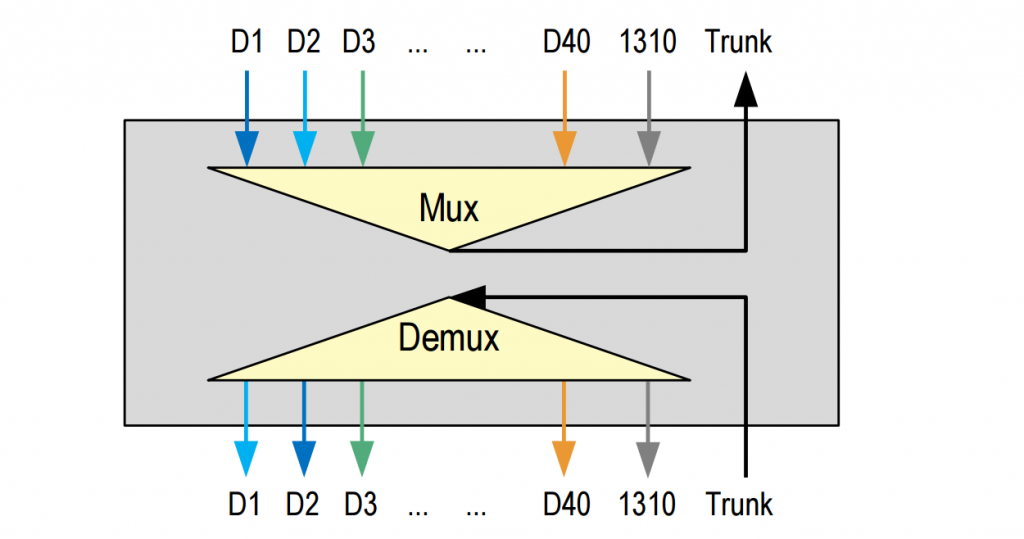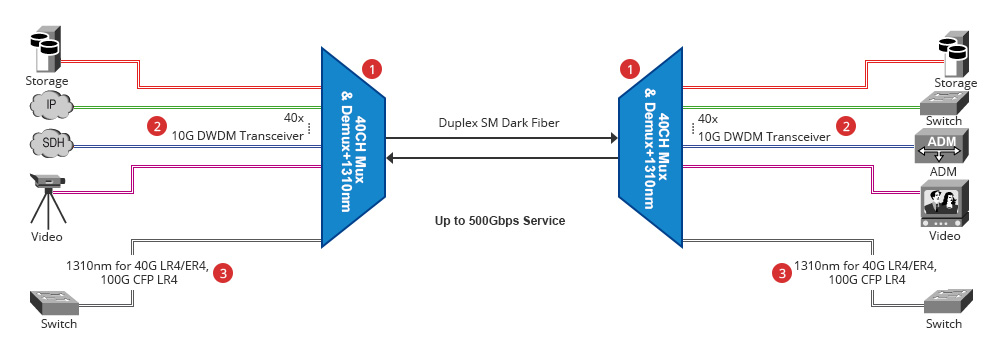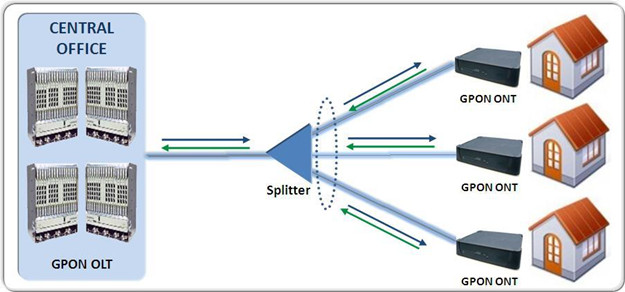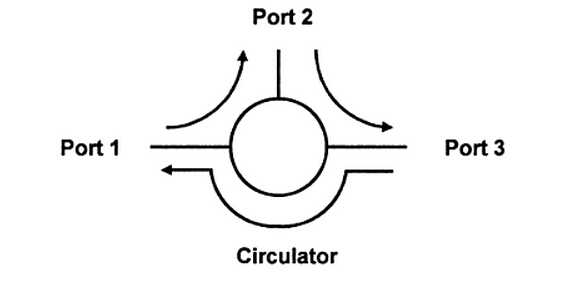WDM technologies are considered to be the most cost-effective solution to expand the existing network without adding additional fiber optic cable. The two types of WDM architectures—CWDM and DWDM have already been widely deployed in current network systems and can support 40G/100G network easily. DWDM has advantages over CWDM as it can multiplexing more wavelengths.
For the traditional 40 CH DWDM MUX/DEMUX, each port is connected to a transceiver by a length of patch cable. Currently the most commonly used optics for DWDM are 10G SFP+ modules. Thus, for a 40 CH MUX/DEMUX, up to 400G can be reached by using forty 10G DWDM SFP+ modules. Is that the limitation of DWDM network? One of the most significant spirits of this industry is challenging the limit of data rate. Actually, with a small change on the DWDM MUX/DEMUX, the capacity of DWDM network can be largely increased and it doesn’t cost much. This post will take an example of the most commonly used DWDM MUX/DEMUX which has 40 channels (from C21 to C61) in a 1R rack. But the 40 CH DWDM MUX/DEMUX that we use is a little different from the traditional ones.
The difference laying at the front panel of the 40 CH DWDM MUX/DEMUX—a pair of 1310 nm port is added to the device. And this is the key point why we can move another step on forward the way to increase DWDM network capacity. The following picture show the logical setup of this 40 CH DWDM MUX/DEMUX.

The 1310nm port can be used for 40G/100G transceivers, like 40GBASE-LR4/ER4 or 100GBASE-LR4/ER4 transceivers. The 40G/100G signals can be multiplexed with the other 40*10G signals on the other 40 channels. Together with this pair of 1310 nm port, a 40 CH DWDM MUX/DEMUX can run up to 500G.
The beauty of this port is not limited to data rate increasing. It can also save a lot of money and spaces. You do not need to add another 10 ports and 10 pairs of SFP+ modules for additional 100G transmission. No change in the cabling infrastructure is required. Just a pair of 100G optics and a pair of patch cables, you can get another 100G service. The following picture shows the application of this 40 CH MUX/DEMUX with 1310nm port. (Click the picture to enlarge it.)
Here offers the detailed cabling solution for this 40CH DWDM MUX/DEMUX with 1310nm port. Kindly contact sales@fs.com for more details.
| Item Number | ID# | FS Part Number | Item Description |
|---|---|---|---|
| 1 | 35887 | 40MDD-1RU-A1-FSDWDM | 40 Ch 1RU Duplex DWDM MUX DEMUX C21 to C60 with 1310nm Port and Monitor Port |
| 2 | 14491 | DWDM-SFP10G-40 | 10GBASE 100GHz DWDM SFP+ 40km, LC Duplex Interface, C21 to C60 |
| 31533 | DWDM-SFP10G-80 | 10GBASE 100GHz DWDM SFP+ 80km, LC Duplex Interface, C21 to C60 | |
| 14599 | DWDM-XFP10G-40 | 10GBASE 100GHz DWDM XFP 40km, LC Duplex Interface, C21 to C60 | |
| 14650 | DWDM-XFP10G-80 | 10GBASE 100GHz DWDM XFP 80km, LC Duplex Interface, C21 to C60 | |
| 3 | 35208 | QSFP-LR4-40G | 40G QSFP+ LR4 1310nm 10km, LC Duplex Interface |
| 35210 | QSFP-ER4-40G | 40G QSFP+ ER4 1310nm 40km, LC Duplex Interface | |
| 35014 | CFP2-LR4-100G | 100G CFP2 LR4 1310nm 10km, LC Duplex Interface |




